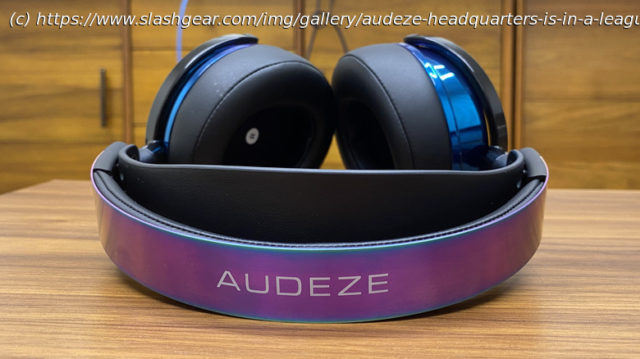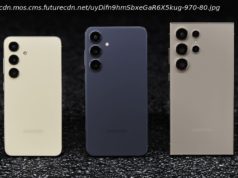SlashGear recently toured Audeze’s Orange County headquarters while testing out some the audio manufacturer’s flagship high-end headphones – including the CBRN.
Audeze — the manufacturer of high-end headphones such as the CRBN and the Maxwell — is a play on the word odyssey inspired by the seminal sci-fi classic, “2001: A Space Odyssey.” It’s a fitting name, or rather, a fitting inspiration, since the company is dedicated to pushing the boundaries of audio technology, just as the film both showcased an exciting, yet very possible near-future, as well as expanded what the medium of cinema itself could do.
Audeze, which recently earned a SlashGear innovation award at IFA 2024, isn’t just making fancy headphones. It’s redefining the limits of what personal audio should sound like, just as Enzo Ferrari wasn’t just making fancy sports cars but figuring out how to design and craft engines and vehicles that could deliver as much performance as current technology would allow. Audeze began from humble beginnings and was founded by its current CEO, Sankar Thiagasamundram, and CTO, Dr. Dragoslav Colich.
Originally, the small company built large speakers using magnetic planar drivers, which produce accurate and detailed sound, but which were traditionally not used in headphones due to their complexity and cost. Since then, Audeze has made a name for itself by producing high-end headphones using custom-built drivers, including current-gen gaming headsets. What really makes Audeze stand out, however, is that they manufacture these innovative drivers in house. The company’s Orange County headquarters also includes its factory, where a team assembles its high-tech hardware both by hand and with the help of sophisticated, custom-built machinery.
SlashGear recently visited this factory at Audeze HQ and spoke with CEO Sankar Thiagasamundram about the company’s past, present, and future — which included a sneak peek at the hotly-anticipated CRBN2.Audeze technology is out of this world — literally
By shrinking down magnetic planar drivers and incorporating them into headphones, Audeze has managed to bring a fidelity to personal audio quality that wasn’t thought possible not too long ago. There are other headphones equipped with electrostatic transducers out there, but Audeze managed to make theirs ultra-thin by removing laminate coating, which also reduces audio quality.
I had a chance to feel this film, which consists of incredibly small yet durable carbon nanotubes, and was surprised at how such an advanced, useful technology could feel so impossibly thin and lightweight. In fact, the same groundbreaking material is even used to build solar sails that are the future of space exploration. Compared to metal drivers, carbon nanofiber transducers can more faithfully recreate and transmit sound with more resolution, transparency, and clarity.
It was never the original plan to shrink down these unique electrostatic planars small enough to be used for headphones. That idea “started off as a research project”, according to Audeze CEO, Sankar Thiagasamundram, whom I sat down with for a conversation that lasted nearly an hour. The research project was a collaboration with the medical field, to see if it were possible to “design headphones with no metal parts inside.”Audeze’s electrostatic headphones started out as a medical research project
Instead, the initial idea was to build headphones intended for MRI patients. If you’ve ever undergone an MRI, which uses powerful magnetic fields to scan your body, you’ll know it can be a claustrophobic experience. No metal can be allowed anywhere near the scanner while you’re undergoing an MRI, but headphones would be useful for patients to help drown out the sounds of the machine and distract them. Not only can this calm down patients, but it can help make for more accurate brain scans that aren’t affected by neurological surges of anxiety. Soon, Audeze made metal-free headphones a reality for such medical applications.
“Once we made these headphones”, continued Thiagasamundram, “we realized they were also probably one of the best-sounding headphones we ever made — so we also made an electrostatic version for our consumers.” Thiagasamundram laughed and mentioned that somebody once referred to the expensive, high-end product as “gold-plated headphones”, which isn’t accurate — because the carbon nanofiber film used for Audeze headphones “is much more expensive than gold.”Audeze builds all of its state-of-the-art drivers in house
Audeze is headquartered in Orange County, California, just south of Los Angeles. Not only are its offices located there, but the complex — which recently expanded to an entire new building — includes a showroom and the factory that produces the drivers itself. Audeze has stayed in the O.C. because it’s near to where the electrostatic film necessary for the planars are manufactured. Of course, sunny SoCal is a good fit for Audeze regardless, as it’s also home to other groundbreaking tech industries, including drone and medical device manufacturers, as well as aerospace companies. With its expansion, Audeze is becoming a big fish in a rapidly-growing pond.
Audeze stands out from these other companies by being one of the few headphones or speaker manufacturers not just in Orange County, but in the entire U.S. As Thiagasamundram explained to me, it’s “very hard to find people manufacturing audio. In audio companies, it’s very hard to find people manufacturing anywhere, except overseas — unless you’re making small batches of things.”
Still, Audeze has found a way to manufacture its drivers at scale, making it a uniquely valuable asset to the audio industry as a whole.






